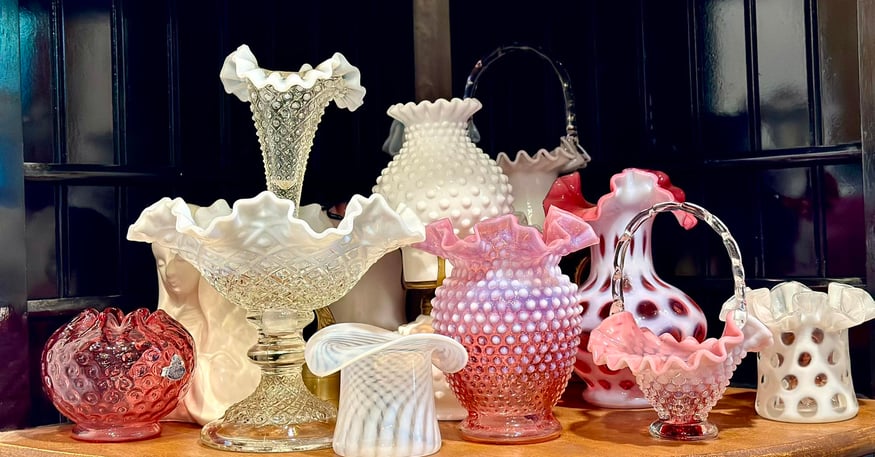Exploring the Fascinating History of Vintage Fenton Glass Collectibles
Delve into the world of Fenton glass with our blog, featuring insights on rare pieces, iconic designs, and the legacy of this beloved collectible glassware. Learn about the artisans behind the creations and discover tips for starting your own Fenton glass collection. Join us on a journey through time and craftsmanship.
ITSA GLASS
5/8/20242 min read


The Fenton Glass Company has a rich history that spans over a century, marked by innovation, craftsmanship, and resilience. Here's an overview of the history of the Fenton Glass Company:
Founding and Early Years (1905-1920)
The Fenton Art Glass Company was founded in 1905 by brothers Frank L. Fenton and John W. Fenton in Martins Ferry, Ohio. Initially, the company focused on decorating glass blanks from other manufacturers. However, in 1907, the brothers decided to produce their own glass and moved their operations to Williamstown, West Virginia, where they built their first factory.
Innovation and Growth (1920-1940)
Fenton quickly gained a reputation for its innovative glassware, introducing a variety of colors and patterns that set it apart from other glass manufacturers. The company became known for its carnival glass, which featured iridescent finishes that were highly popular during the 1920s and 1930s. This period also saw the introduction of unique patterns such as Hobnail, Coin Dot, and Daisy and Button.
The Depression and World War II (1930-1950)
Like many businesses, Fenton faced challenges during the Great Depression, but it managed to survive by adapting its product line to meet changing consumer demands. During World War II, the company contributed to the war effort by producing glass for military applications. Despite these challenges, Fenton continued to innovate, introducing new colors and patterns that kept its products in demand.
Post-War Expansion and Popularity (1950-1970)
The post-war era was a time of significant growth for Fenton. The company expanded its product lines to include a wider range of decorative and functional glassware. Fenton's distinctive styles and high-quality craftsmanship made its products highly sought after by collectors. During this period, the company introduced popular colors like Blue Opalescent and Cranberry, further cementing its reputation for innovation.
Modernization and Challenges (1970-2000)
As the glass industry faced increasing competition from imported goods, Fenton continued to innovate and modernize its production techniques. The company embraced new technologies and expanded its product offerings to include more contemporary designs. Despite these efforts, the company faced financial difficulties in the 1990s, leading to a restructuring and a renewed focus on its core strengths.
Recent History and Legacy (2000-Present)
In the early 2000s, Fenton faced significant challenges due to changing market conditions and increased competition from overseas manufacturers. In 2007, the company announced it would cease traditional glass production, though it continued to produce decorative glassware and collectibles. Fenton's legacy endures through the continued popularity of its products among collectors and enthusiasts.
Contribution to Glassmaking
Fenton's contributions to the glassmaking industry are significant. The company's innovative use of color, pattern, and technique has influenced generations of glassmakers. Fenton glass is known for its distinctive beauty and high quality, and its pieces are treasured by collectors worldwide.
Preservation of the Craft
Although Fenton ceased traditional glass production in 2007, the company's impact on the industry remains. Many former Fenton employees and artists have continued to work in the glassmaking field, preserving the techniques and traditions that made Fenton a beloved name in American glassware.
The Fenton Glass Company is remembered not only for its beautiful and innovative glassware but also for its resilience and adaptability in the face of changing times. Its legacy continues to inspire and influence the world of glassmaking today.


